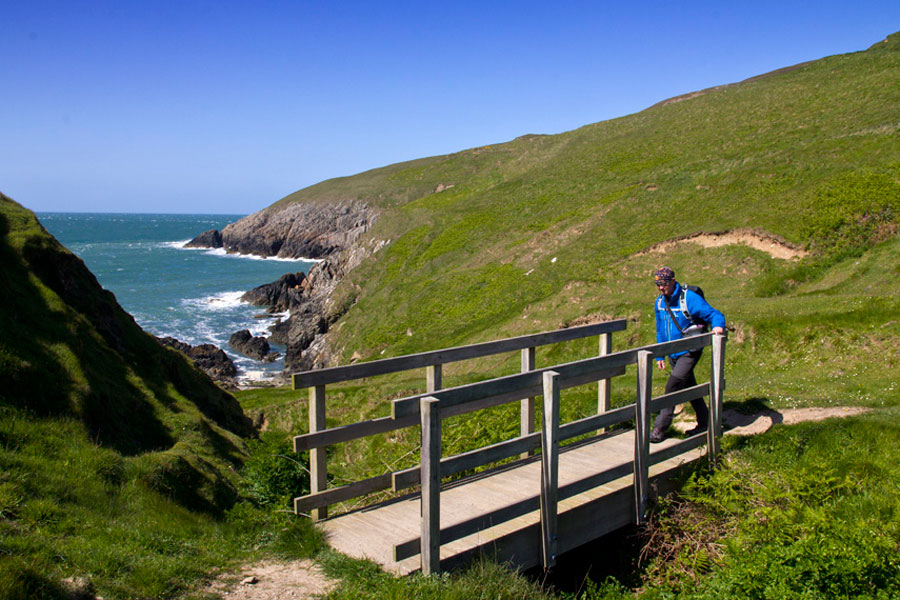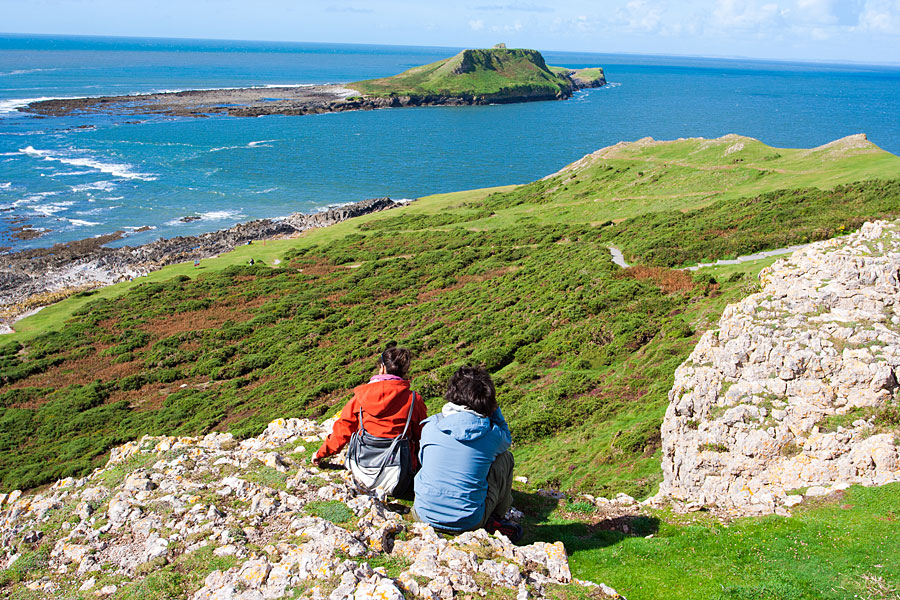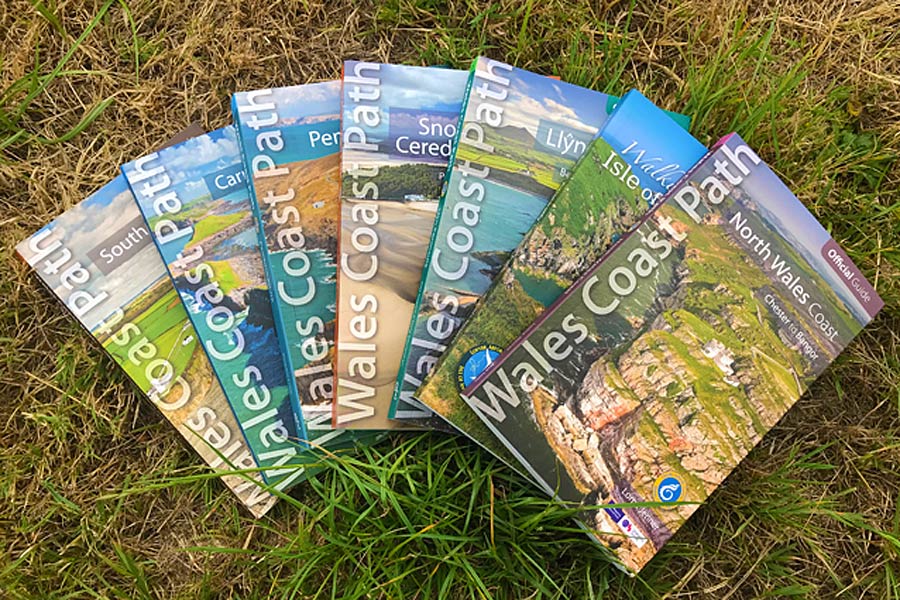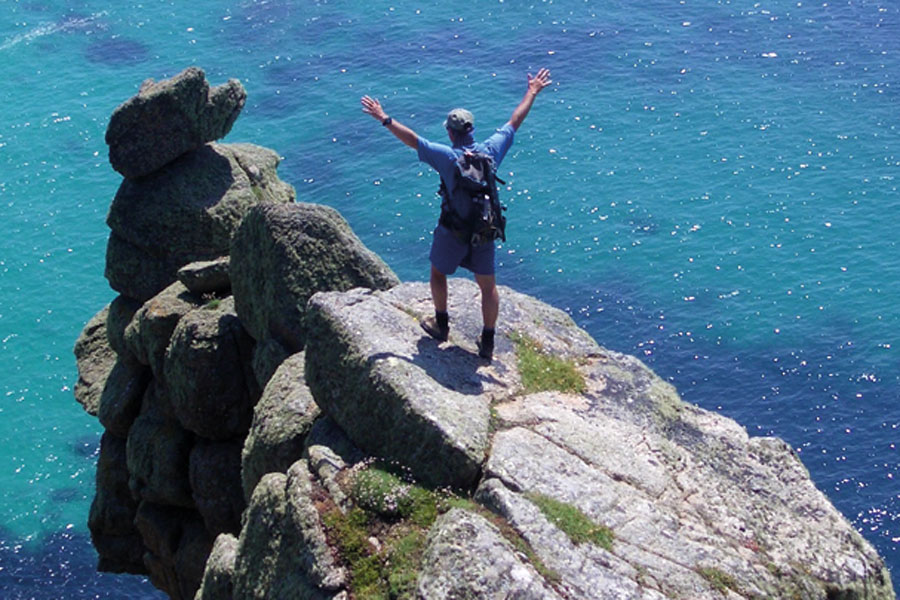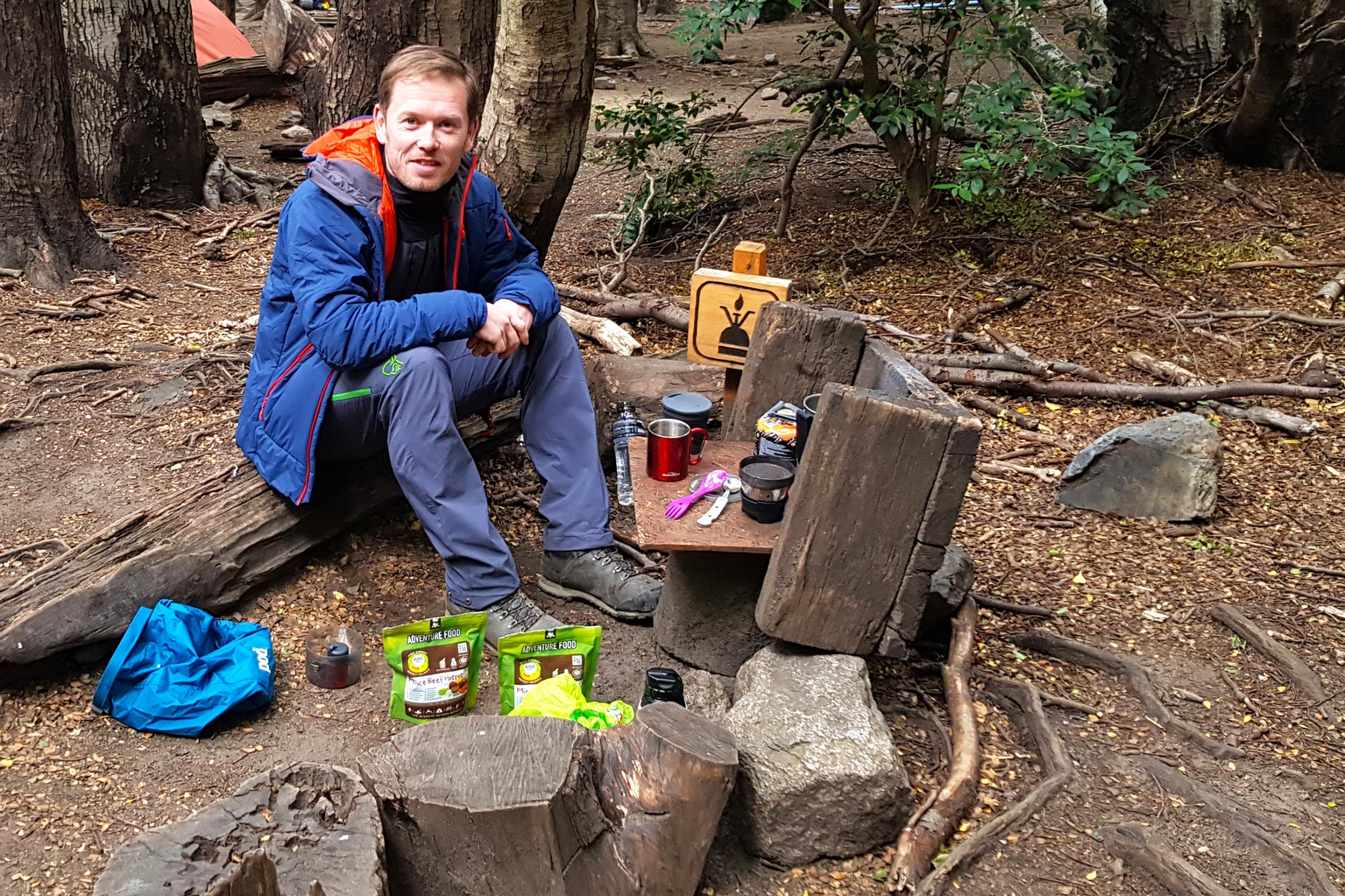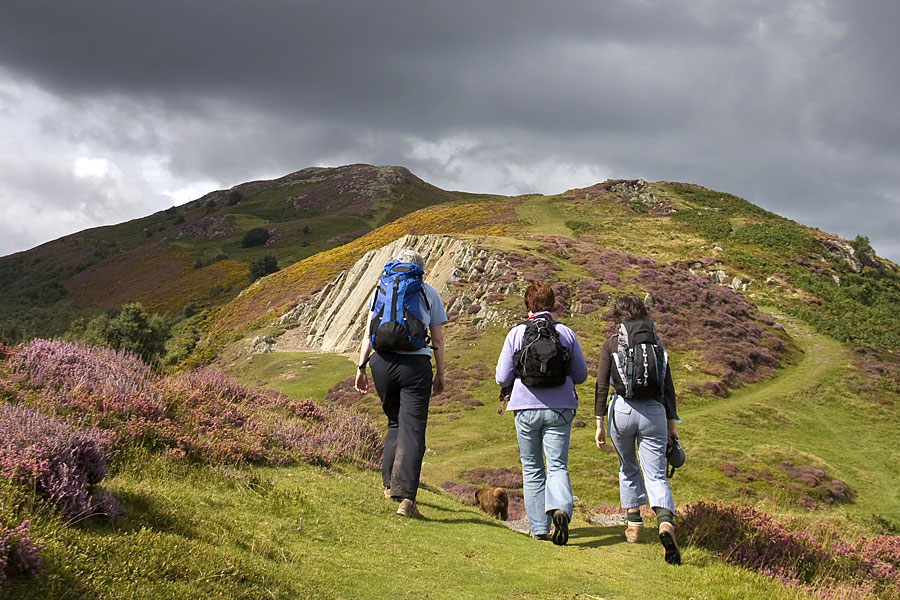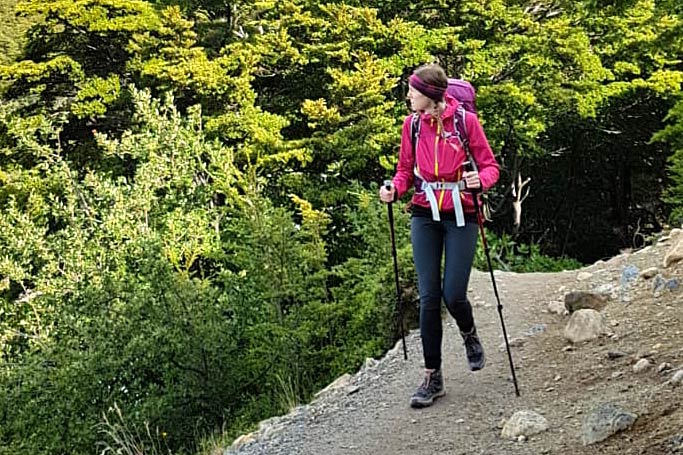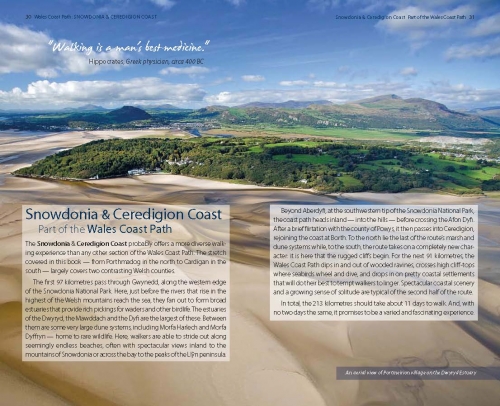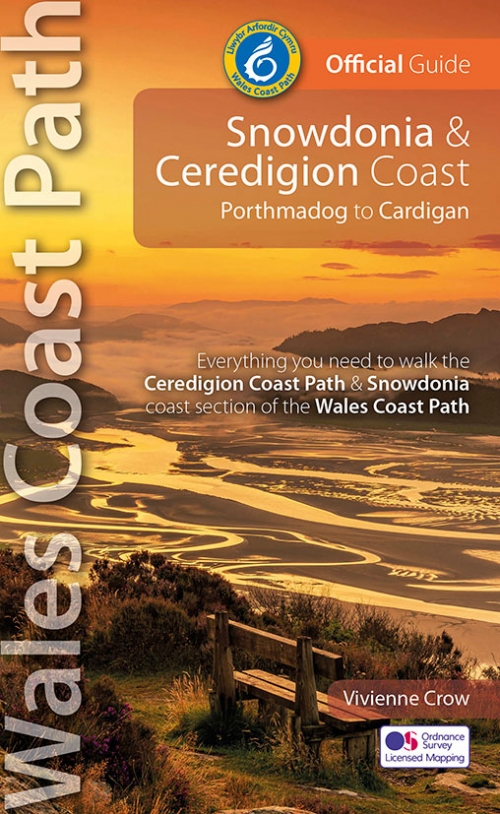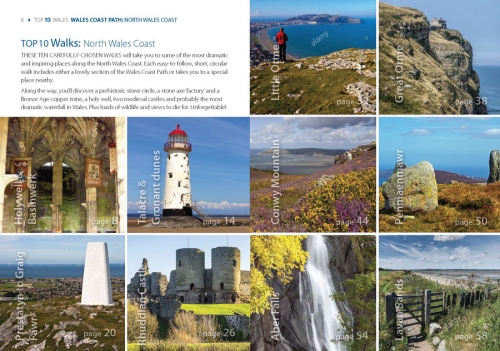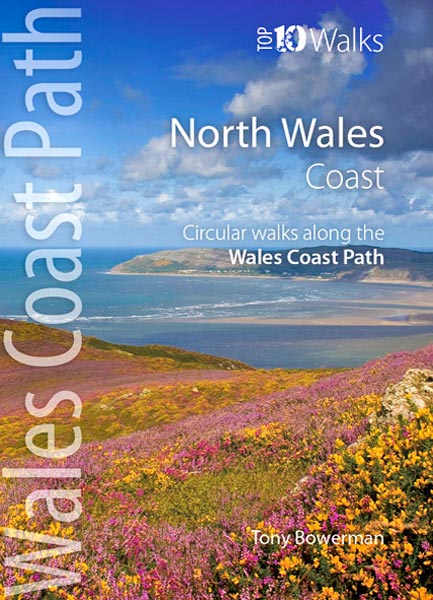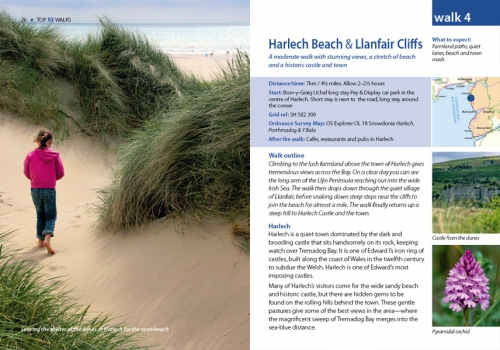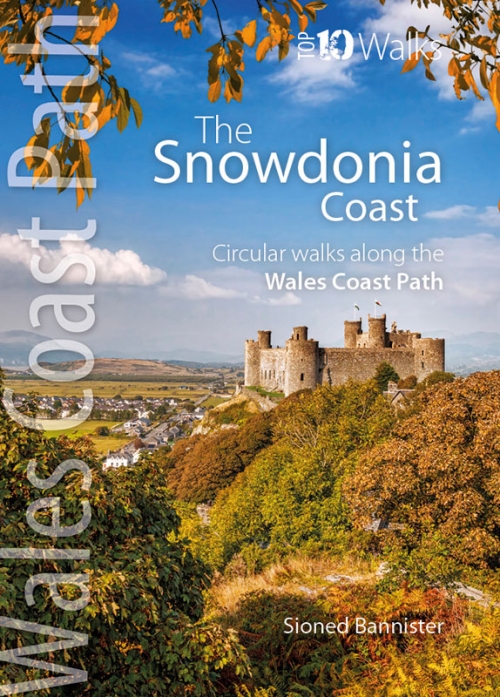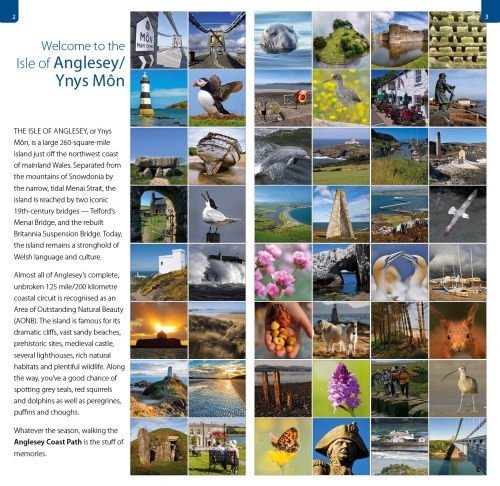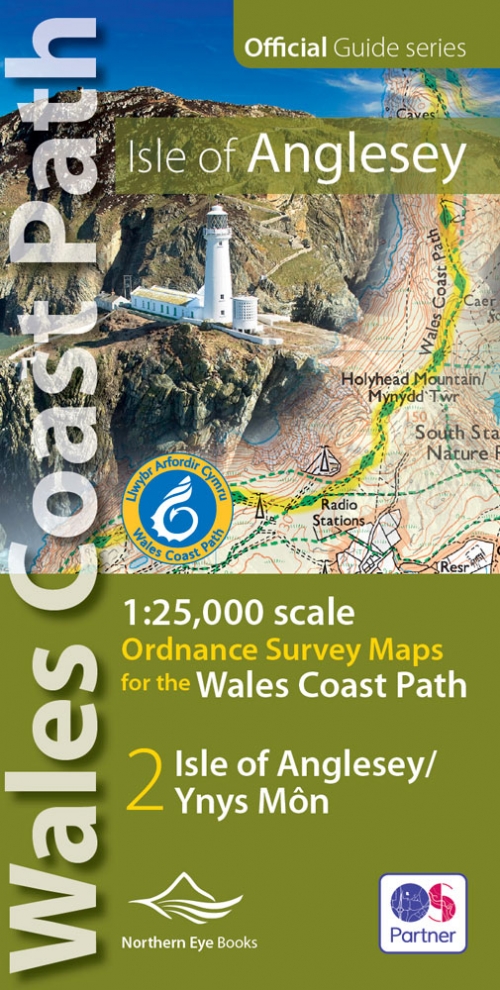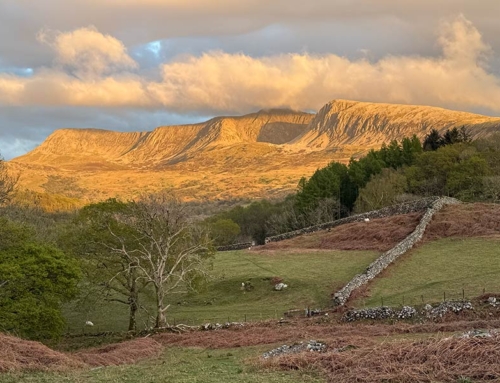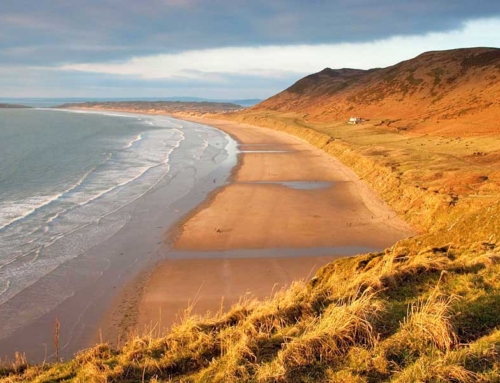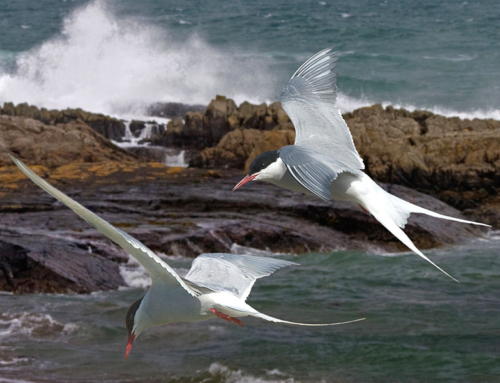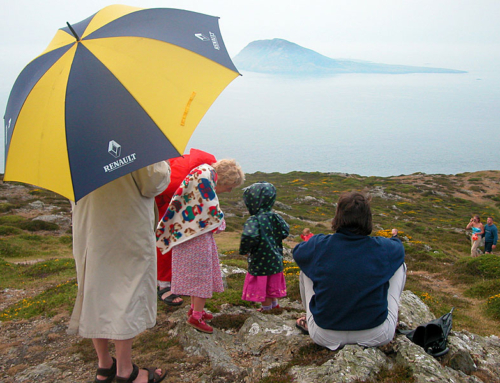A long-distance walker crossing a footbridge on the Llyn Peninsula section of the Wales Coast Path
Long-distance walking requires careful planning. Laura Hodgkinson suggests what to consider at the planning stage
ONE OF THE KEYS TO PREPARING FOR A LONG TREK IS TO PLAN WELL IN ADVANCE. Gather information on local bus times, transport links and accommodation to make a plan for your route. It’s also useful to have an idea of where you’re likely to be able to stop for drinking water, replenish your food, pitch your tent and take showers. Work out a realistic daily mileage for yourself and use this as a base to plan an itinerary from.
The Official Guides to the Wales Coast Path may be useful for itinerary planning as the authors and publishers have done all the hard work for you.
Improve your fitness
No matter how fit you are, chances are you haven’t attempted a long-distance walk recently enough to have not lost some of your stamina. The best way to plan for a long distance walk is to walk, walk, walk! It’s even better if you can do this with a weighted rucksack. Treadmills set to an uphill incline will also be a good alternative if you can’t get outdoors.
The more you improve your stamina now the more enjoyable the trek will be.
Have a trial camp
Pack your rucksack with everything you plan to take and head out for a 1-2 night trek somewhere you’re familiar with. You will figure out what you genuinely need to take, what you could leave behind and if there’s anything you’ve forgotten.
Head out for a 1-2 night trek somewhere you’re familiar with. You’ll figure out what you genuinely need to take, what you could leave behind, and if there’s anything you’ve forgotten.
How to pack your rucksack
Packing set-up
You will likely be packing and re-packing your rucksack daily on the trek. Store the items you’re less likely to need at the bottom, such as a tent and sleeping bag, as you will only need these in the evenings.
Pack heavy items like water closest to your back/body as this will help balance your centre of gravity and makes the load easier to carry.
Ideally your rucksack will have outer pockets and a top pocket, which you can use to store items you’ll need regular access to such as your snacks for the day, SPF lip balm and your map and compass.
Bag weight
We can generally carry up to 1/3 of our bodyweight in a well-fitting rucksack. For example, if you weigh 60kg you should ensure your rucksack weighs no more than 20kg when fully loaded.
It’s worth remembering that your bag weight will increase and decrease depending on the amount of food and water you are carrying.
Ensure you carry the majority of the weight on your hips, not on your shoulders, and only take what you need.
Trekking Essentials
Large rucksack and rain cover Ensure your rucksack is large enough to fit all of your gear in, between 50-60 litres in volume would be good.
Footwear You’ll need sturdy walking boots or shoes that can cope with steep or rough paths as well as being on your feet with a heavy load for long periods. Take a spare pair of trainers or sandals for the evenings.
Pocket knife Ideally with tweezers
Tick remover
Map and compass The Wales Coast Path is sign posted but some areas of the trail are unclear or you could lose the path in bad weather
Guidebook
Water setup Have at least enough water bottles / containers to carry two litres of drinking water and refill at every opportunity. Locals may refill your water bottles with tap water if you ask nicely!
Water filter or water purifying tablets
Waterproof dry bag Useful to keep valuables in, such as your wallet.
Food 2-3 freeze-dried camping meals per day plus high-energy snacks. You won’t need to carry as much if you have planned ahead to visit a pub or café.
First aid kit Basic items like plasters, ibuprofen, antiseptic wipes, emergency foil blanket, and any personal medication such as inhalers.
Walking poles
Head torch and spare batteries
Emergency whistle Some rucksacks already have a small whistle built into the chest strap.
Camping Essentials
Lightweight tent
Sleeping bag and sleeping bag liner
Inflatable sleeping mat Therm-a-rest are a good go-to brand for inflatable mats.
Inflatable pillow Alternatively you could save space and use your clothes as a pillow
Insect repellent
Cooking setup Camping stove with cooking pot, gas canister and matches
Lightweight cutlery Plastic bowl, camping mug and ‘spork’
Personal Essentials
Mobile phone Both for emergencies and for taking photos. (Dial 999 in an emergency and ask for the Coastguard.)
Power bank / solar charger
Travel towel
Biodegradable soap
Toiletries Hairbrush, deodorant, toothbrush + toothpaste
Baby wipes
SPF lip balm
Antibacterial hand gel
Sunglasses
Sun cream
Toilet roll
Wallet/purse Carry some cash and small change, too
Clothing
Waterproof jacket
4 Pairs of Walking socks Keep one pair aside to wear at night, and alternate the other three
2-3 quick-dry T-shirts Wear one while you wash and dry the other
Long sleeve base layer top Merino wool is preferable as it regulates body heat and doesn’t smell!
Warm layer / fleece with pockets
Warm insulated jacket Can also double-up as a camping pillow!
Walking trousers The types that zip off into shorts are great for summer.
Waterproof over trousers
Buff
Sun hat
Underwear. Take enough to last 4-5 days and wash them as you go. Merino underwear is a good option.
Hat & gloves
If you’re in need of any inspiration or further help planning your adventure, you could try the Official Guidebooks covering the entire Wales Coast Path in a series of six books. View the full set of Official Guides here. These guidebooks contain all the information you’re likely to need for each section of the path including transport details, easy to follow route descriptions for each day and clear Ordnance Survey mapping. You’ll also get an overview of the history and wildlife you’ll encounter on the way!
Hopefully you will now have a good idea of how to plan and pack for your Wales Coast Path trek. Being prepared means you’ll be able to enjoy every step of your adventure knowing you have the right gear and are well prepared. Who knows, maybe you’ll be able to pass this advice on to other would-be trekkers long after your trek.


